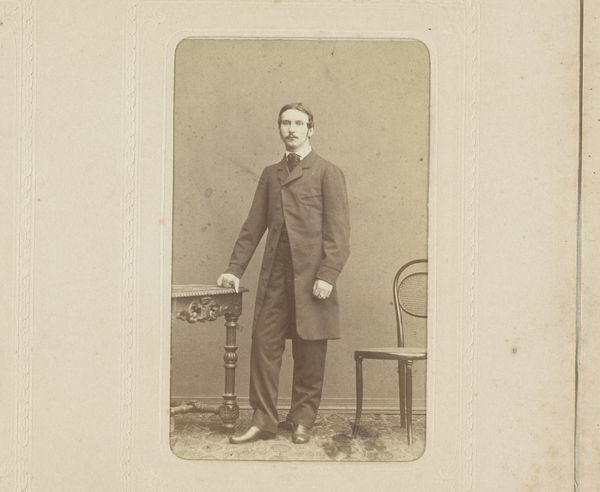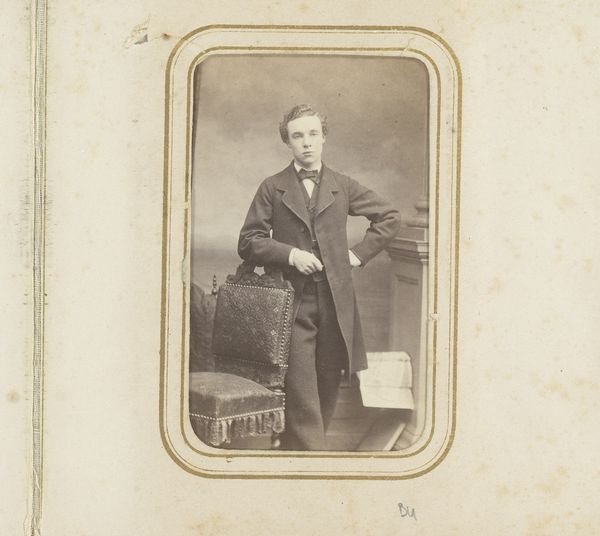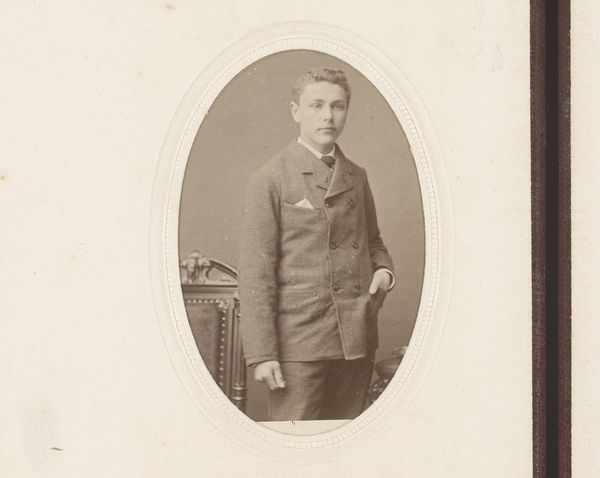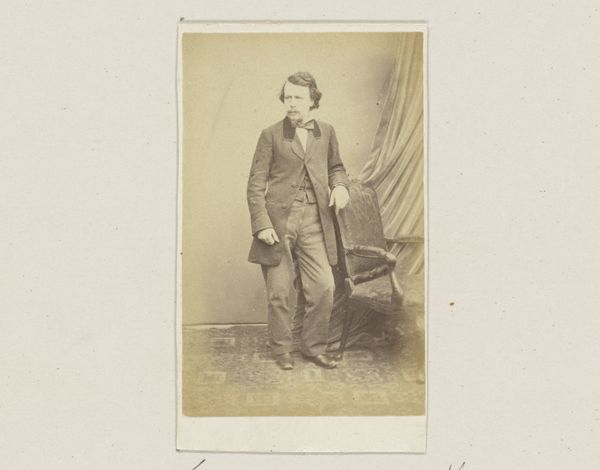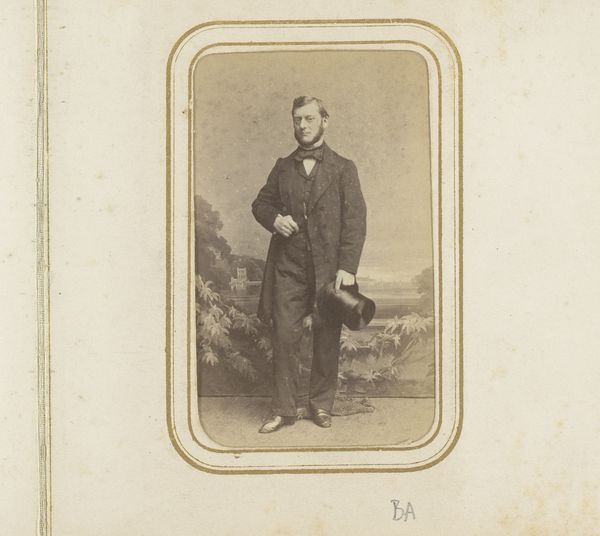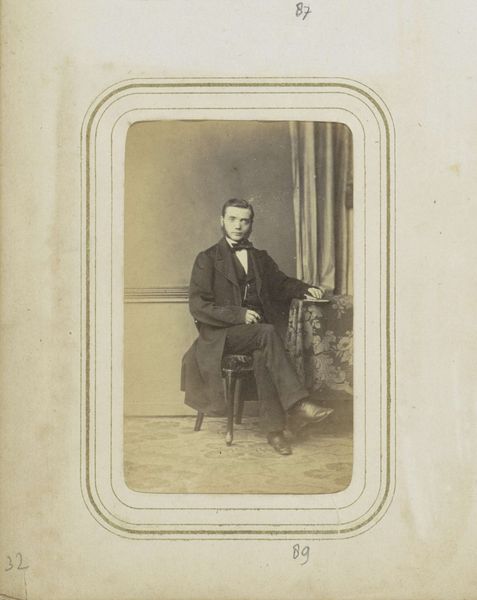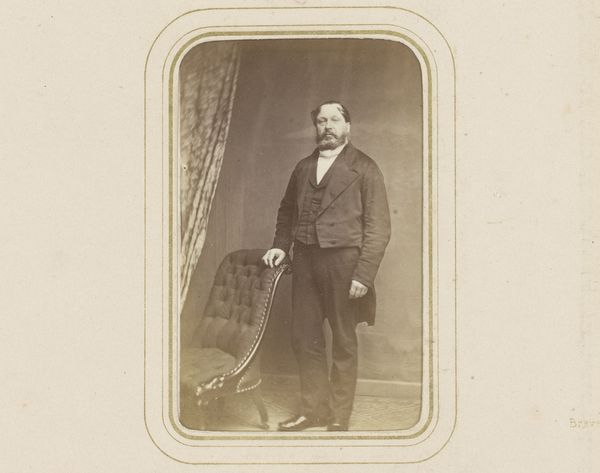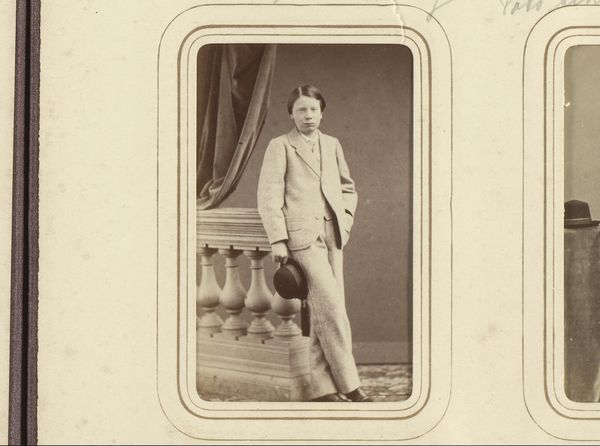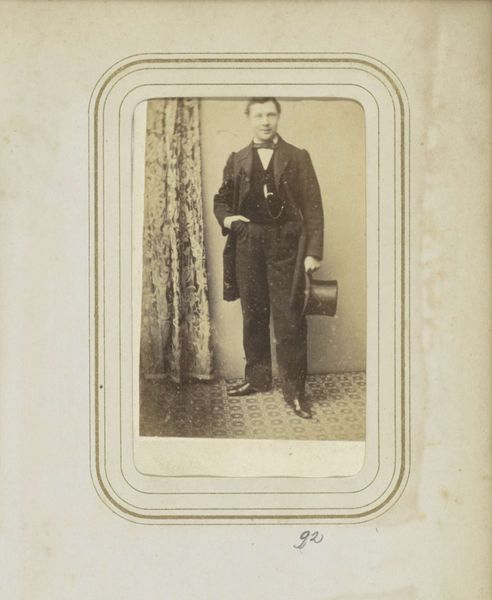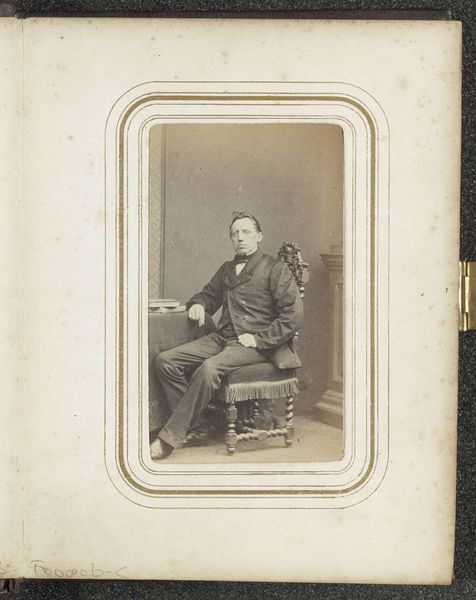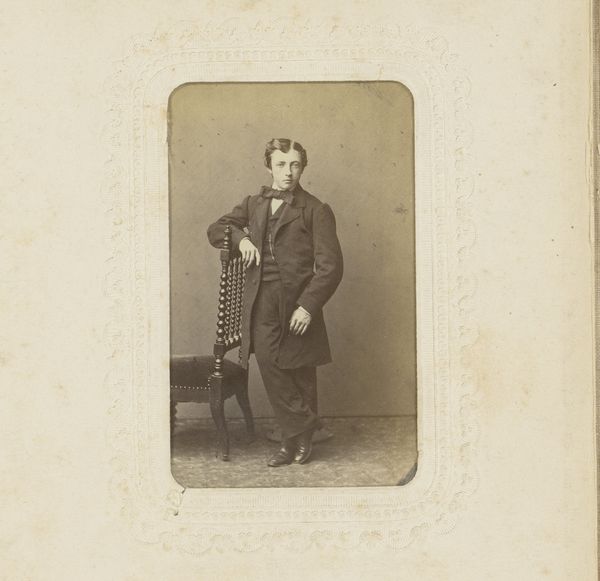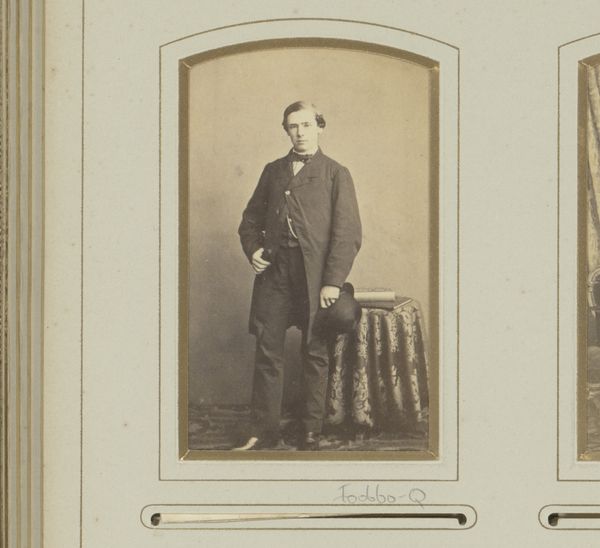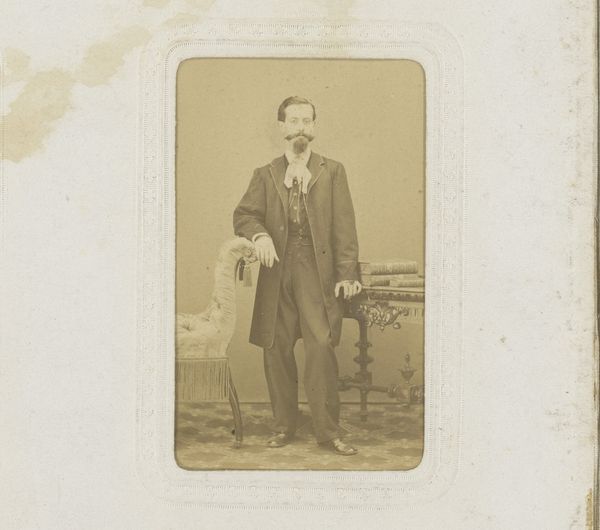
Portret van een staande jonge man met in de ene hand een hoge hoed en in de andere hand een paraplu en handschoenen 1860 - 1900
0:00
0:00
photography
#
portrait
#
16_19th-century
#
photography
#
historical photography
#
19th century
Dimensions: height 84 mm, width 53 mm
Copyright: Rijks Museum: Open Domain
Curator: Take a moment to examine "Portret van een staande jonge man met in de ene hand een hoge hoed en in de andere hand een paraplu en handschoenen," a photograph produced sometime between 1860 and 1900 by Gush & Ferguson. What strikes you most about its composition? Editor: The somber tone is what jumps out. The subject’s almost stern expression, combined with the subdued lighting, creates a rather serious mood. Even the positioning feels rigid, contained by the frame. Curator: I'm particularly interested in the material realities embedded within this photographic portrait. Note how the crisp depiction of his clothing points to industrial textile production democratizing fashion for the burgeoning middle class. This young man's attire speaks volumes about societal expectations of appearance and upward mobility in that era. Editor: Precisely! Look at how his posture relates formally to the chair and the ornate table nearby—each vertical echoes the next, emphasizing his self-possession and, frankly, his class standing. The careful arrangement within the frame amplifies his stature. Curator: The act of commissioning such a portrait underscores the societal shifts towards self-representation facilitated by photographic technology. The means of producing this image—the chemicals, equipment, and studio labor involved—highlight the accessibility that photography offered versus painted portraiture to those who sought a symbol of their place in the world. Editor: Yes, but observe too the stark contrast between the detail in the figure and the soft blur of the background. The photographer is manipulating depth of field to subtly isolate the subject, making his presence all the more impactful and creating, structurally, a clear visual hierarchy. Curator: This "hierarchy" is also reproduced in how these portraits became part of visual archives and family collections. These were commodities shaping identity as much as reflecting it. The photograph embodies the intersection of artistic representation, industrial innovation, and class aspirations of the nineteenth century. Editor: True, true. But I leave with the persistent formal image of a determined, if not a touch melancholic, young man poised at the threshold of the modern era. Curator: And for me, this photo reflects photography's transformative role, shifting both art production and cultural norms by making visual representation available to more people.
Comments
No comments
Be the first to comment and join the conversation on the ultimate creative platform.
